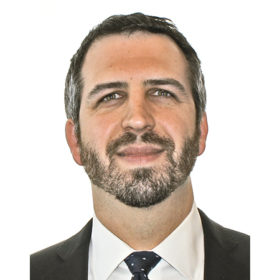With extreme weather events becoming all too common, and a growing list of PV projects that have been damaged or destroyed by strong winds, ensuring that mounting structures are able to withstand the pressures they’ll face in the field is a vital concern for all involved. In this pv magazine Webinar, we’ll examine where current testing standards may fall short, and what this means for suppliers of trackers and mounting structures. And we’ll also be treated to a closer look at Gamechange Solar’s testing program, which takes into account the different pressure gradients across a module’s surface in a high wind environment; and ensures ample wind resistance.
Download presentations
Presentation of Scott Van PeltPresentation of Daniel Chang
Presentation ofYarrow Fewless
Module wind load resistance: Standards vs. reality
Comprehensive testing at every stage has been vital to the solar industry’s impressive growth to date – investors, insurers, and other project stakeholders all need some assurance that this still young technology can live up to expectations, particularly when those expectations are centered around the entire system being installed outdoors and left to the elements for a lifetime of 20 years or more.
When it comes to trackers, proving reliable wind resistance is among the most vital of these tests. However, a closer look at common wind loading standards reveals that they do not accurately represent the way the wind loads the module. In this pv magazine Webinar, we’ll look at this in detail, as well as how bifacial and large format modules impact the maximum wind speed that can be supported by the modules and tracker system.
We’ll be joined by Yarrow Fewless, Principal at CPP Wind Engineering, who will demonstrate how the wind pressure PV systems are under in the field often does not match with what they’re tested against, leaving the door open for costly failures after installation.
Following on from Yarrow; Scott Van Pelt, Chief Engineer at GameChange Solar will take us through their module testing procedure that more accurately simulate the distribution of stress caused by wind in the field, and how findings gained from these have influenced the design of the company’s latest tracker system.
Finally, Daniel Chang, VP of Business Development at the Renewable Energy Test Center (RETC), will share his expertise on different combinations of module and racking systems, and how the latest round of module technology upgrades – in particular bifacial and the switch to larger formats – affect how the mechanical rating of the system and therefore the maximum wind speed it can support.
pv magazine Webinar content:
• Illustrate Wind load patterns on solar trackers.
• How module and racking combinations affect system structural performance
• Impacts of large format modules and bifacial technology
• Q&A
Questions can be submitted beforehand or during the webinar through a chat window. Mark Hutchins, editor at pv magazine, will be the moderator of this webinar.
Registration for this pv magazine Webinar is free of charge.



